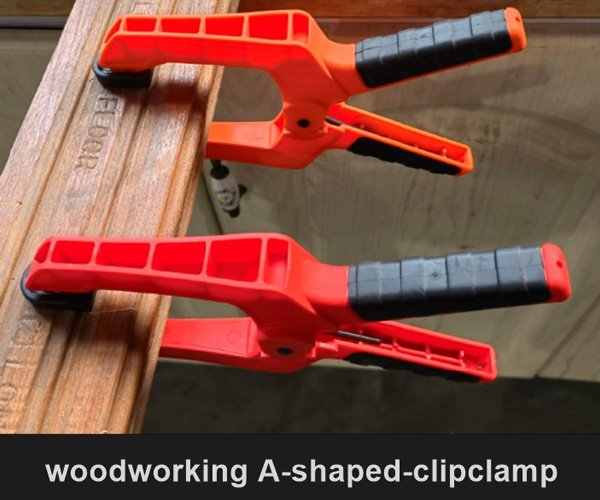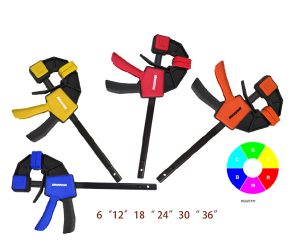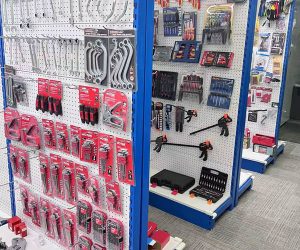Spring clamps are versatile tools that provide a temporary grip on materials. They’re widely used across different industries, from woodworking to automotive repair, to secure objects while you work. Whether you’re holding materials together during assembly or just need a quick way to keep things in place, spring clamps offer a reliable solution. So, what exactly makes these simple tools so indispensable in many different applications? This article will explore the many uses of spring clamps, their benefits, and how you can make the most of them in your own projects.
1. What is a Spring Clamp?
A spring clamp is a mechanical device that uses a spring to generate a clamping force, which is applied to hold materials together. The simple design typically includes two arms that open and close with the force of a spring. But here’s the kicker—these tools are surprisingly strong despite their compact size!
Spring clamps come in various sizes, and they are made from durable materials like steel or plastic to ensure they can withstand pressure and repetitive use. The mechanism is relatively straightforward: when the clamp’s arms are pressed apart, the spring works to push them back together, creating a secure grip on the materials in between.
Spring clamps are commonly used in industries like woodworking, construction, and automotive repair. They are perfect for temporary holding tasks, and their quick application and release make them incredibly convenient for both professionals and hobbyists. What’s the real story behind their popularity? It lies in their ability to provide a fast, reliable hold without the need for complex adjustments or tools.
2. What Are the Main Functions of a Spring Clamp?
Spring clamps serve a wide range of functions, which is why they are so useful in various industries. These handy tools are primarily designed to provide temporary holding power during processes like assembly, gluing, and repairs. Ready for the good part? The main advantage is their ability to hold objects securely in place without the need for screws or nails, making them ideal for delicate or temporary tasks.
One of the most common uses is in woodworking, where they are used to hold pieces of wood together during gluing or sanding. Their pressure ensures that the glue bond is solidified while preventing the pieces from shifting. Another great use is in car repair, where they can hold parts together while they are being welded or glued, ensuring they stay in position until the adhesive cures.
Additionally, spring clamps are used in DIY projects, such as crafting, home improvement, and even light assembly work. Their versatility and ease of use have made them a must-have in many toolkits.
3. How Does a Spring Clamp Work?
The spring clamp operates based on a simple yet effective mechanical principle. When you press the clamp’s arms apart, you compress the spring inside. Once released, the spring pushes the arms back together, applying pressure to whatever materials are placed in the clamp’s jaws. This pressure creates a secure hold that can prevent materials from slipping or shifting during various tasks.
What’s interesting is that the design allows for a consistent, reliable grip every time, making it especially useful in time-sensitive tasks. For instance, in woodworking, the constant tension prevents wood from warping while adhesives dry. In the automotive industry, this feature is essential when you need to keep parts aligned during a repair.
You can also adjust the strength of the clamp by choosing the right size. Smaller clamps apply less force, while larger ones can hold heavier materials with a greater grip. But here’s the deal: the more you use these clamps, the more you’ll appreciate the subtle differences in their pressure and how they can be adjusted to fit various tasks.
4. What Materials Can Be Held by a Spring Clamp?
Spring clamps are versatile and can hold a wide variety of materials. The most common materials they can clamp include wood, plastic, and metal, which are used in everything from woodworking to construction and car repairs. But here’s the kicker—while they work with many materials, the type of material often determines the size and strength of the clamp you should use.
For lighter tasks, such as holding plastic sheets or small wooden parts, smaller spring clamps are perfect. These are ideal for delicate projects where you don’t need heavy-duty holding power. On the other hand, larger clamps are required when you are working with heavy metal parts or larger pieces of wood. The strength of the clamp ensures that the material is held securely without causing damage.
In fact, using the right size spring clamp for the material is crucial to achieving the best results. Using a clamp that is too small might not provide the holding force needed, while one that is too large can cause damage to more delicate materials.

5. What Are the Different Types of Spring Clamps?
Spring clamps come in several different types, designed for specific tasks. The most common types are the standard spring clamp, heavy-duty spring clamp, and specialty clamps. Each serves a different purpose, and knowing which one to use can make all the difference in your project.
Standard spring clamps are the most basic and commonly used. They are perfect for light to moderate tasks, such as holding small pieces of wood together during a woodworking project or securing lightweight materials. But here’s the kicker—if you need more holding power, heavy-duty spring clamps are the way to go. These clamps are designed to handle larger materials and heavier-duty tasks, such as clamping metal parts or larger wooden pieces.
Specialty spring clamps are designed for specific applications, like extra-wide jaws for holding large materials or soft pads on the jaws to prevent damage to delicate surfaces. What’s the real story? The right clamp for the right job is essential for efficiency and quality work.
6. How Are Spring Clamps Used in Woodworking?
Woodworking is one of the most common areas where spring clamps are used. They are perfect for holding wood pieces together while glue sets or during sanding and cutting. Ready for the good part? They help maintain the alignment of wood pieces during glue application, ensuring a perfect joint when the glue dries.
For example, in woodworking, spring clamps are commonly used to secure mitered edges, hold frames together while glue is drying, or clamp a piece of wood to a workbench. Their quick application and easy removal make them incredibly convenient when working with multiple pieces.
Additionally, these clamps are great for sanding. By clamping wood to a flat surface, you can keep it in place while you sand or cut, ensuring that it doesn’t move and that you get an even finish every time.
7. How Do Spring Clamps Help in Car Repair?
In car repair, spring clamps are often used to hold parts in place while they are being welded, glued, or fastened. They can be used for both light and heavy automotive repairs, ensuring that parts stay aligned and stable during the repair process.
One of the most common uses of spring clamps in car repair is during bodywork. They are used to hold panels in place while they are welded together or when adhesives are applied. Without the right amount of clamping force, the panels could shift or warp, leading to poor results.
Moreover, in automotive repair, they can be used for positioning components like hoses, wires, and small parts, preventing them from moving around during installation. Spring clamps are easy to apply and remove, which makes them highly efficient for automotive professionals working with precise parts.
8. Can Spring Clamps Be Used for DIY Projects?
Spring clamps are incredibly versatile, making them ideal for a wide range of DIY projects. From home improvement tasks like painting and wallpapering to crafting and assembling models, spring clamps provide a simple, reliable solution for holding things in place.
For instance, when painting, spring clamps can hold a piece of wood or canvas in place while you paint, ensuring it doesn’t move and that you get smooth, even coverage. In crafting, spring clamps are used to hold parts of a project together while glue dries or to maintain positioning during assembly.
Ready for the good part? They’re perfect for projects that require temporary holding power without causing damage to materials, making them essential for a range of DIYers and hobbyists.
9. What Are the Advantages of Using Spring Clamps?
Spring clamps offer several advantages, making them a go-to tool for many professionals and DIYers. The most obvious advantage is their ease of use—just squeeze and clamp! No need for complex adjustments or additional tools. Plus, they are lightweight and portable, so you can easily carry them around to various job sites.
But here’s the kicker—they’re incredibly affordable. Unlike other clamping tools, spring clamps are budget-friendly, making them accessible to everyone from hobbyists to professionals. Another great benefit is that they are highly durable, especially when made from high-quality materials like steel. This makes them perfect for long-term use across various applications.
10. Are There Any Limitations to Spring Clamps?
While spring clamps are incredibly useful, they do have some limitations. For one, they aren’t suitable for holding large or heavy materials that require substantial clamping force. Heavy-duty clamps are better suited for these tasks. Additionally, spring clamps are not ideal for use with materials that are too thin or fragile, as they could cause damage.
Another limitation is that they are only effective when used on flat or uniform surfaces. Using them on irregular or uneven surfaces can result in a less secure grip, leading to potential slippage. So, while spring clamps are versatile, they aren’t perfect for every task.
11. How Do You Choose the Right Size Spring Clamp?
Choosing the right size spring clamp depends on the task you’re working on. For small tasks, like clamping pieces of wood together for sanding or gluing, a small clamp will do the trick. For larger projects, like holding heavy metal panels or large wooden pieces, you’ll need a larger, heavier-duty clamp.
But here’s the kicker: size isn’t the only factor to consider. The strength of the spring and the material used in the clamp’s construction are just as important. You want a clamp that can apply enough pressure to hold the material in place without damaging it.
12. How Do You Maintain and Care for Spring Clamps?
Maintaining your spring clamps is essential for keeping them in good working condition. Regular cleaning is important, especially after they’ve been used with adhesives or paint. Simply wipe them down with a damp cloth to remove any residue. If the spring mechanism becomes stiff, you can lubricate it with a small amount of oil.
What’s the real story here? Regular maintenance will prolong the life of your spring clamps, ensuring they stay reliable for years to come.
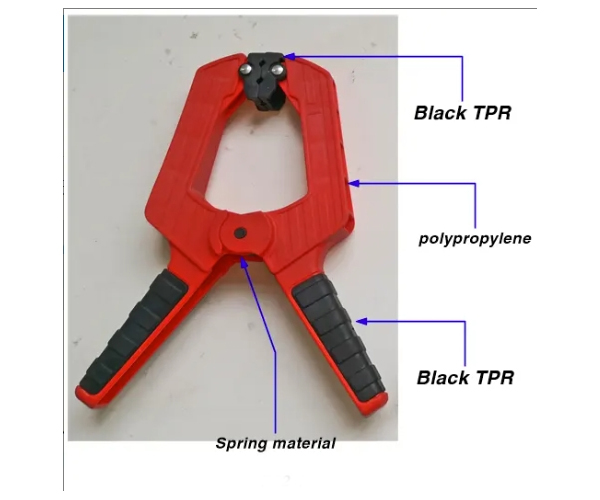
13. Can Spring Clamps Be Used for Painting?
Spring clamps are especially useful in painting projects. They can be used to hold objects in place, ensuring they don’t shift while you work. By clamping a piece of wood or canvas to a flat surface, you can paint without worrying about the material moving or shifting.
Ready for the good part? These clamps are perfect for small to medium-sized painting tasks where you need to secure a surface temporarily while you apply the paint.
14. Where Can You Buy Quality Spring Clamps?
If you’re in the market for spring clamps, there are several options available. Online platforms like Amazon and Alibaba offer a wide range of spring clamps in different sizes and strengths. You can also find them in local hardware stores and tool shops. When choosing where to buy, it’s important to look for reputable suppliers that offer high-quality clamps at reasonable prices.
15. What Are Some Common Alternatives to Spring Clamps?
Spring clamps are not the only option available when it comes to holding materials in place. Other types of clamps, such as C-clamps and bar clamps, are commonly used for larger or heavier projects. While these alternatives provide more holding power, they can be more cumbersome to use and may require more effort to apply.
What’s the real story here? The choice of clamp depends on your specific needs, whether you’re working with delicate materials or heavy-duty tasks.
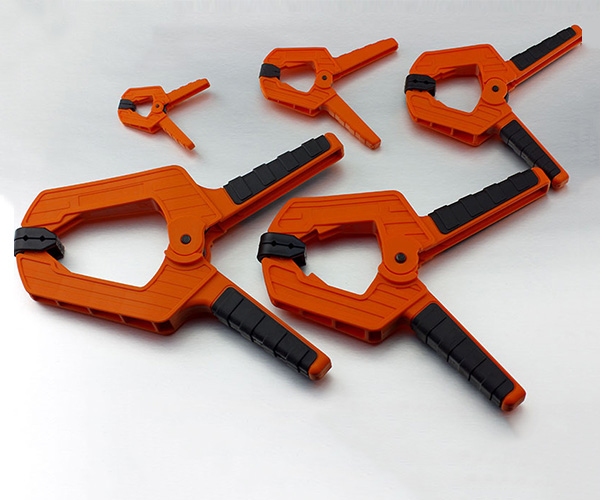
FAQ
Q1: What is a spring clamp?
A spring clamp is a tool that uses a spring mechanism to hold materials together temporarily. It is widely used for tasks like gluing, sanding, and clamping parts during repairs.
Q2: How does a spring clamp work?
A spring clamp works by applying tension to its spring, which causes the arms to close and grip the material placed between them.
Q3: What materials can a spring clamp hold?
Spring clamps can hold materials like wood, plastic, and metal, making them ideal for various applications in woodworking, automotive repair, and DIY projects.
Q4: Are there different types of spring clamps?
Yes, there are standard spring clamps, heavy-duty spring clamps, and specialty clamps designed for specific uses.
Q5: How do you maintain a spring clamp?
Maintaining a spring clamp involves cleaning it after use, lubricating the spring mechanism, and ensuring it remains free from rust and debris.

